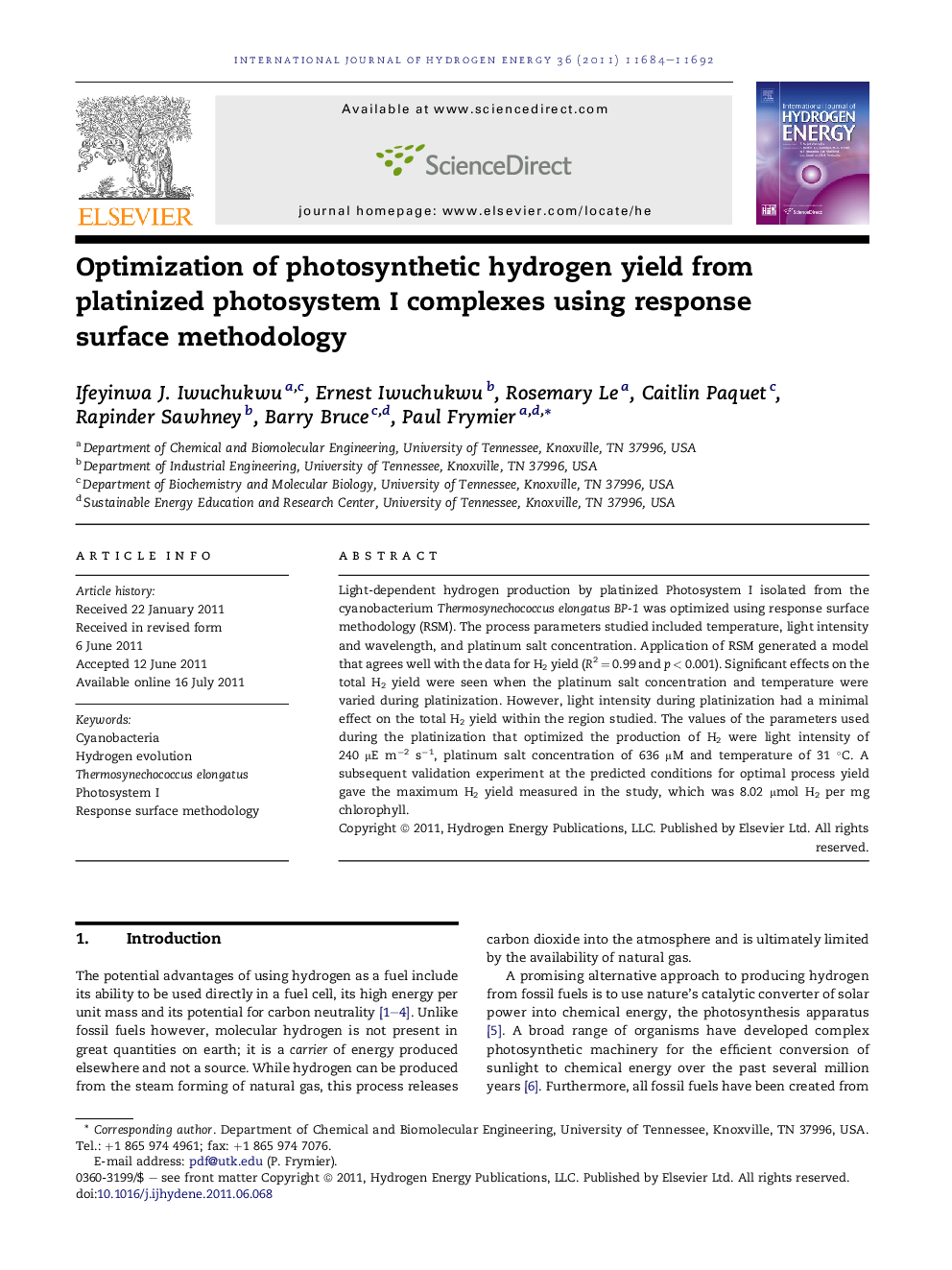| Article ID | Journal | Published Year | Pages | File Type |
|---|---|---|---|---|
| 1275857 | International Journal of Hydrogen Energy | 2011 | 9 Pages |
Light-dependent hydrogen production by platinized Photosystem I isolated from the cyanobacterium Thermosynechococcus elongatus BP-1 was optimized using response surface methodology (RSM). The process parameters studied included temperature, light intensity and wavelength, and platinum salt concentration. Application of RSM generated a model that agrees well with the data for H2 yield (R2 = 0.99 and p < 0.001). Significant effects on the total H2 yield were seen when the platinum salt concentration and temperature were varied during platinization. However, light intensity during platinization had a minimal effect on the total H2 yield within the region studied. The values of the parameters used during the platinization that optimized the production of H2 were light intensity of 240 μE m−2 s−1, platinum salt concentration of 636 μM and temperature of 31 °C. A subsequent validation experiment at the predicted conditions for optimal process yield gave the maximum H2 yield measured in the study, which was 8.02 μmol H2 per mg chlorophyll.
► We used RSM to optimize photosynthetic hydrogen yield from platinized Photosystem I complexes. ► We examined the effect of process variables on the rate of hydrogen production. ► Platinum concentration and temperature had a significant effect on H2 yield. ► Data from the predicted optimum conditions validated the model predictions.
